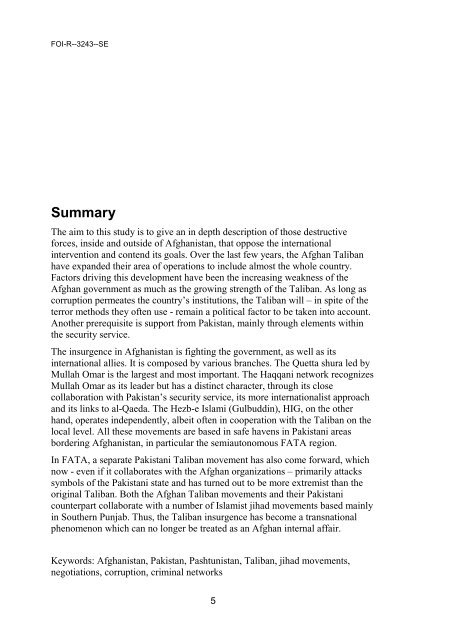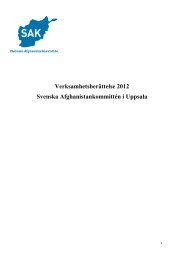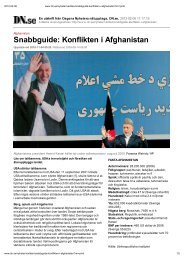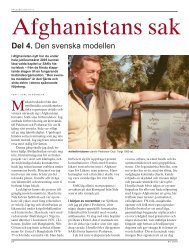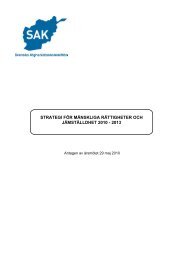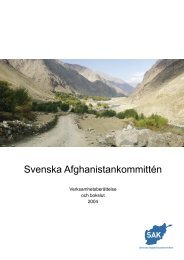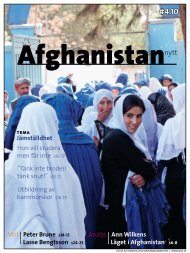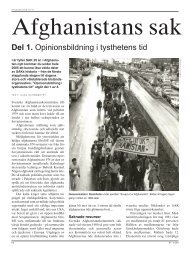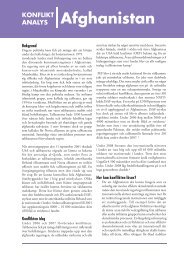Talibanrörelsens uppkomst och drivkrafter - Svenska ...
Talibanrörelsens uppkomst och drivkrafter - Svenska ...
Talibanrörelsens uppkomst och drivkrafter - Svenska ...
Create successful ePaper yourself
Turn your PDF publications into a flip-book with our unique Google optimized e-Paper software.
FOI-R--3243--SE<br />
Summary<br />
The aim to this study is to give an in depth description of those destructive<br />
forces, inside and outside of Afghanistan, that oppose the international<br />
intervention and contend its goals. Over the last few years, the Afghan Taliban<br />
have expanded their area of operations to include almost the whole country.<br />
Factors driving this development have been the increasing weakness of the<br />
Afghan government as much as the growing strength of the Taliban. As long as<br />
corruption permeates the country‟s institutions, the Taliban will – in spite of the<br />
terror methods they often use - remain a political factor to be taken into account.<br />
Another prerequisite is support from Pakistan, mainly through elements within<br />
the security service.<br />
The insurgence in Afghanistan is fighting the government, as well as its<br />
international allies. It is composed by various branches. The Quetta shura led by<br />
Mullah Omar is the largest and most important. The Haqqani network recognizes<br />
Mullah Omar as its leader but has a distinct character, through its close<br />
collaboration with Pakistan‟s security service, its more internationalist approach<br />
and its links to al-Qaeda. The Hezb-e Islami (Gulbuddin), HIG, on the other<br />
hand, operates independently, albeit often in cooperation with the Taliban on the<br />
local level. All these movements are based in safe havens in Pakistani areas<br />
bordering Afghanistan, in particular the semiautonomous FATA region.<br />
In FATA, a separate Pakistani Taliban movement has also come forward, which<br />
now - even if it collaborates with the Afghan organizations – primarily attacks<br />
symbols of the Pakistani state and has turned out to be more extremist than the<br />
original Taliban. Both the Afghan Taliban movements and their Pakistani<br />
counterpart collaborate with a number of Islamist jihad movements based mainly<br />
in Southern Punjab. Thus, the Taliban insurgence has become a transnational<br />
phenomenon which can no longer be treated as an Afghan internal affair.<br />
Keywords: Afghanistan, Pakistan, Pashtunistan, Taliban, jihad movements,<br />
negotiations, corruption, criminal networks<br />
5


